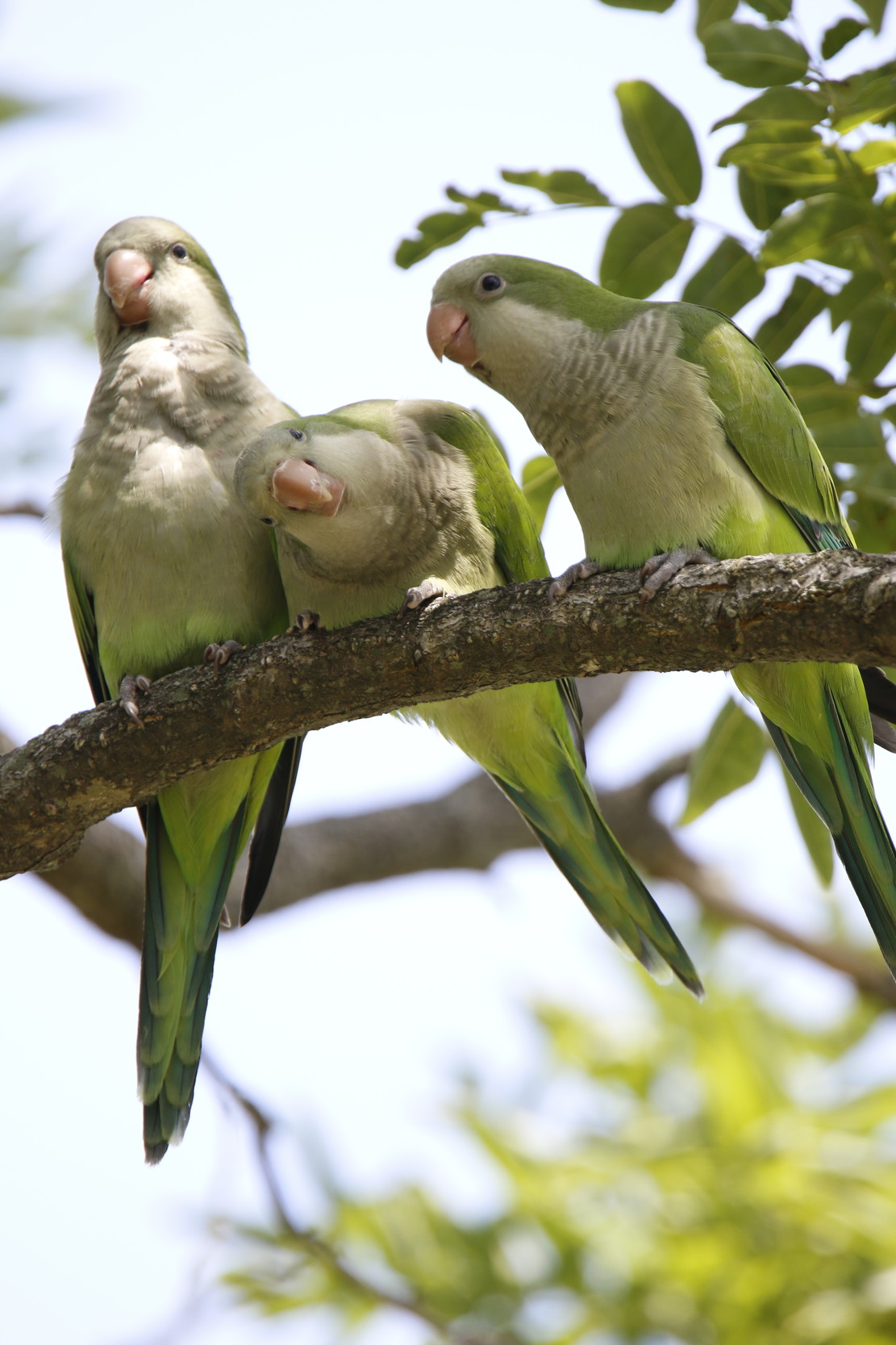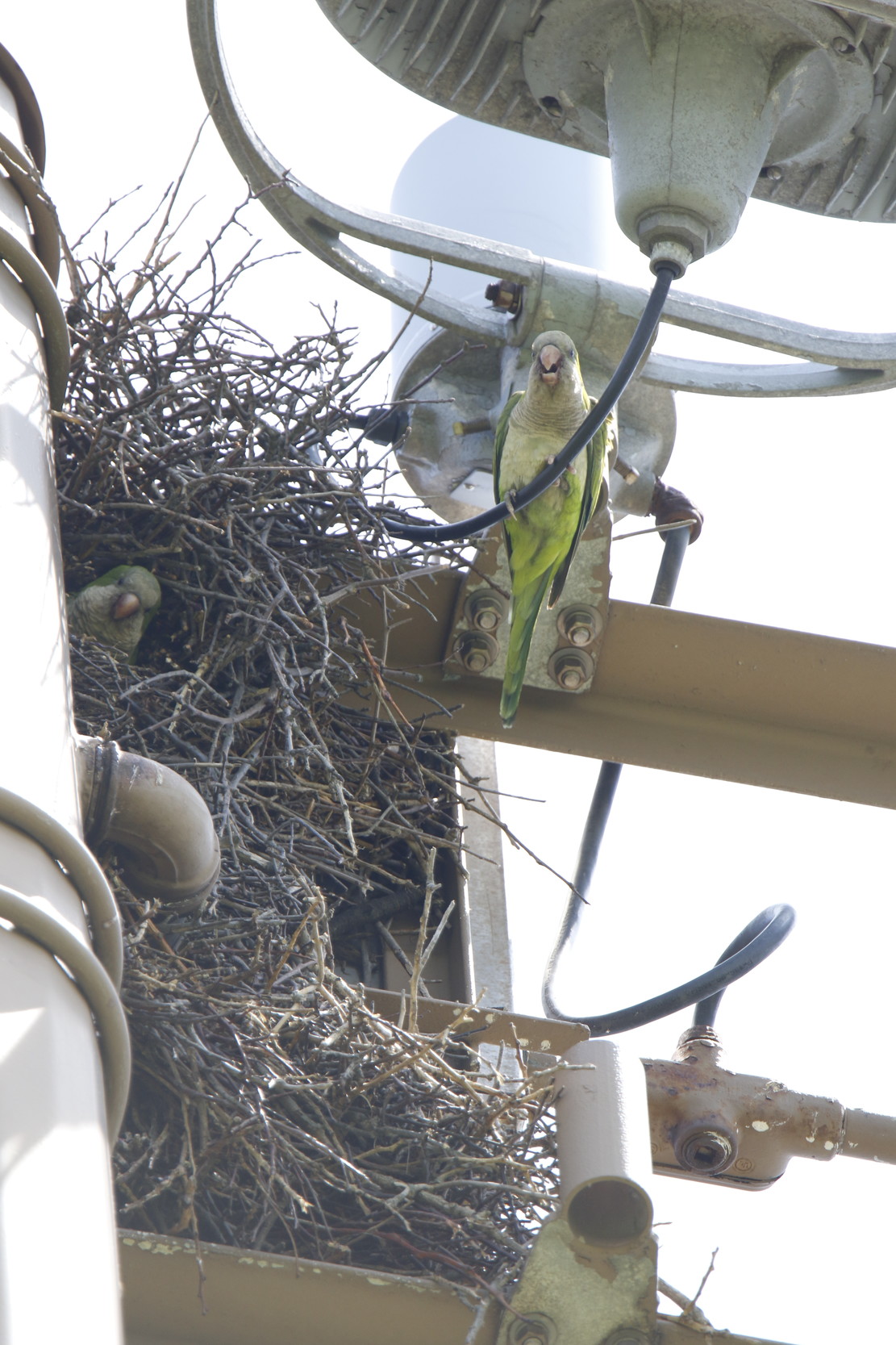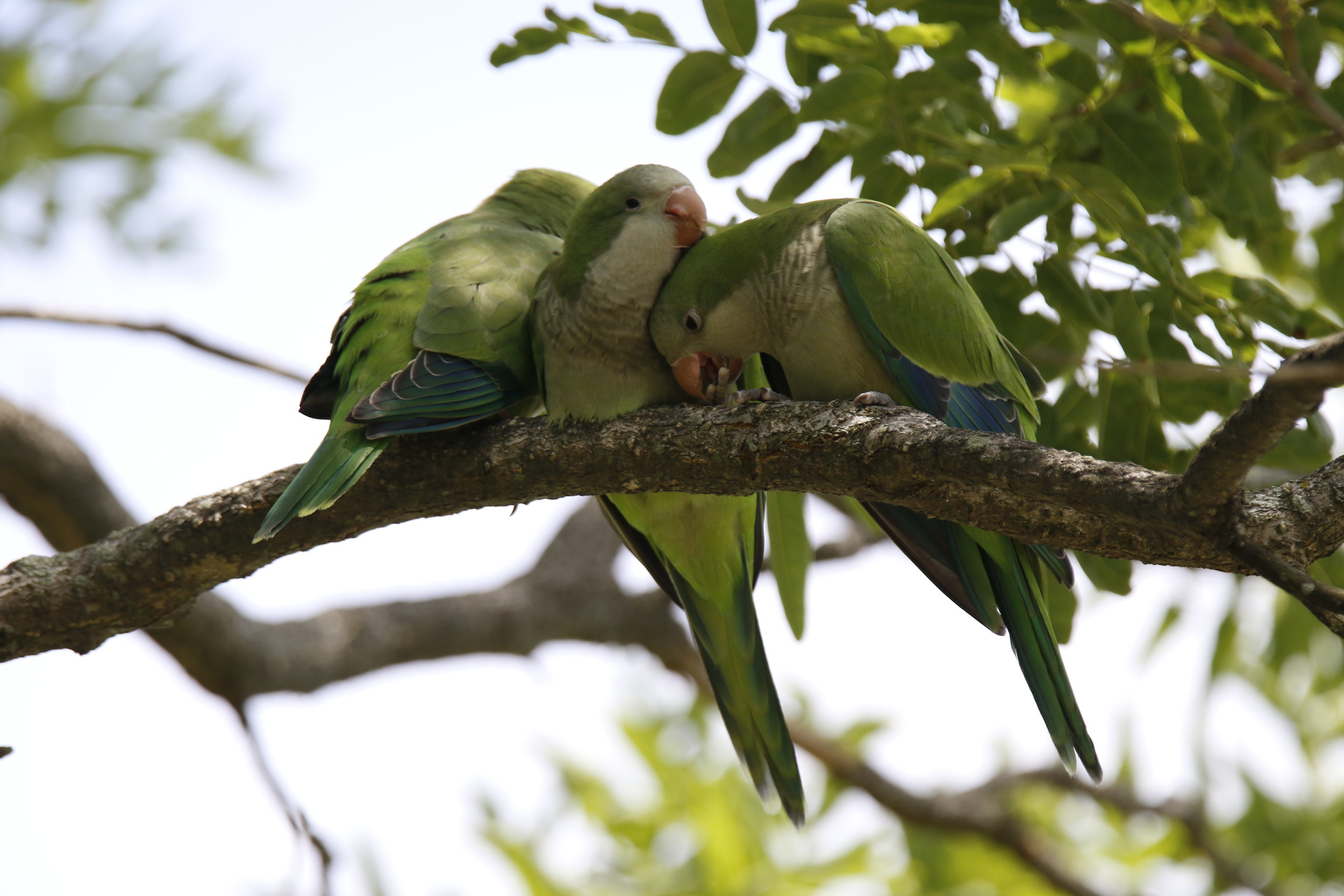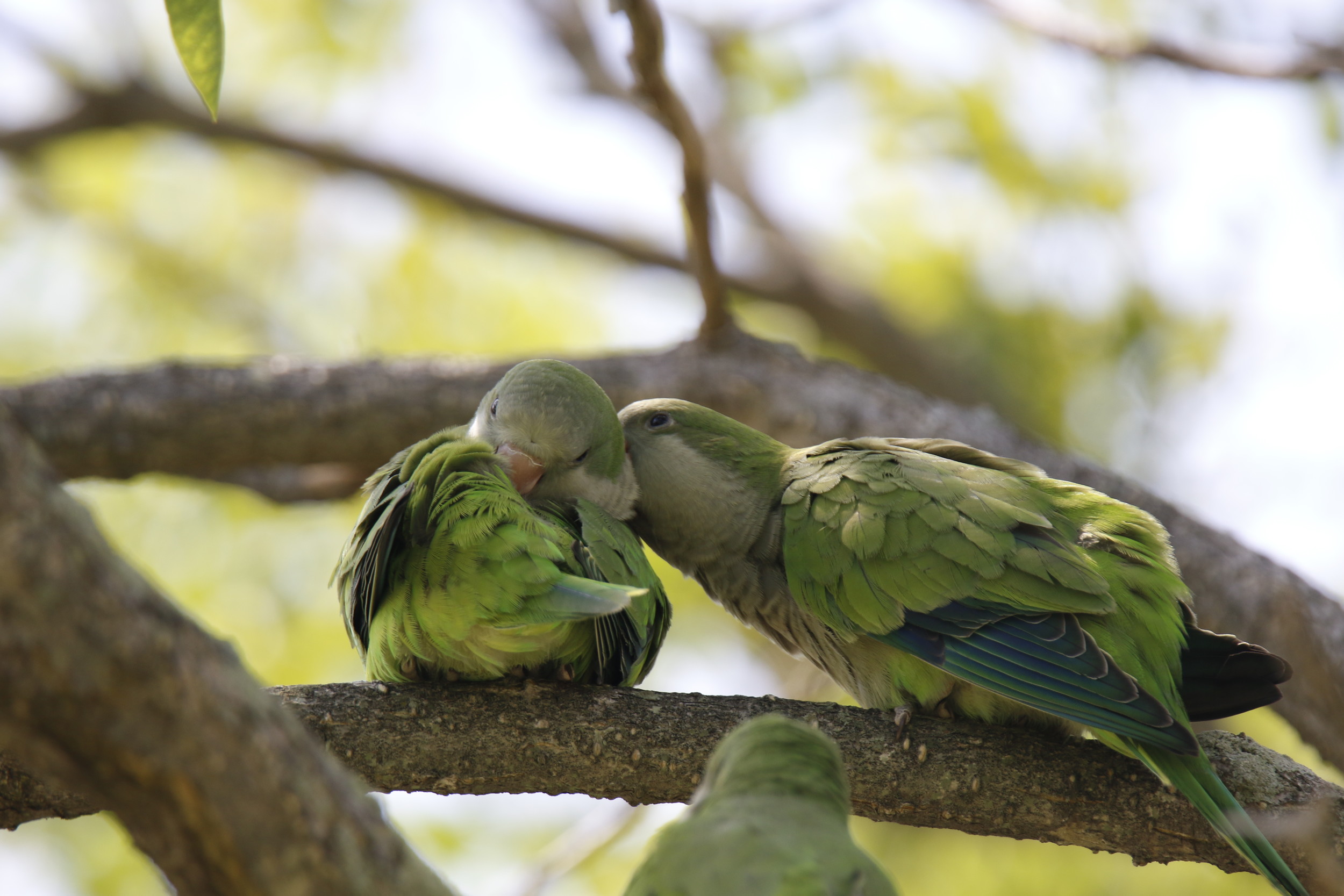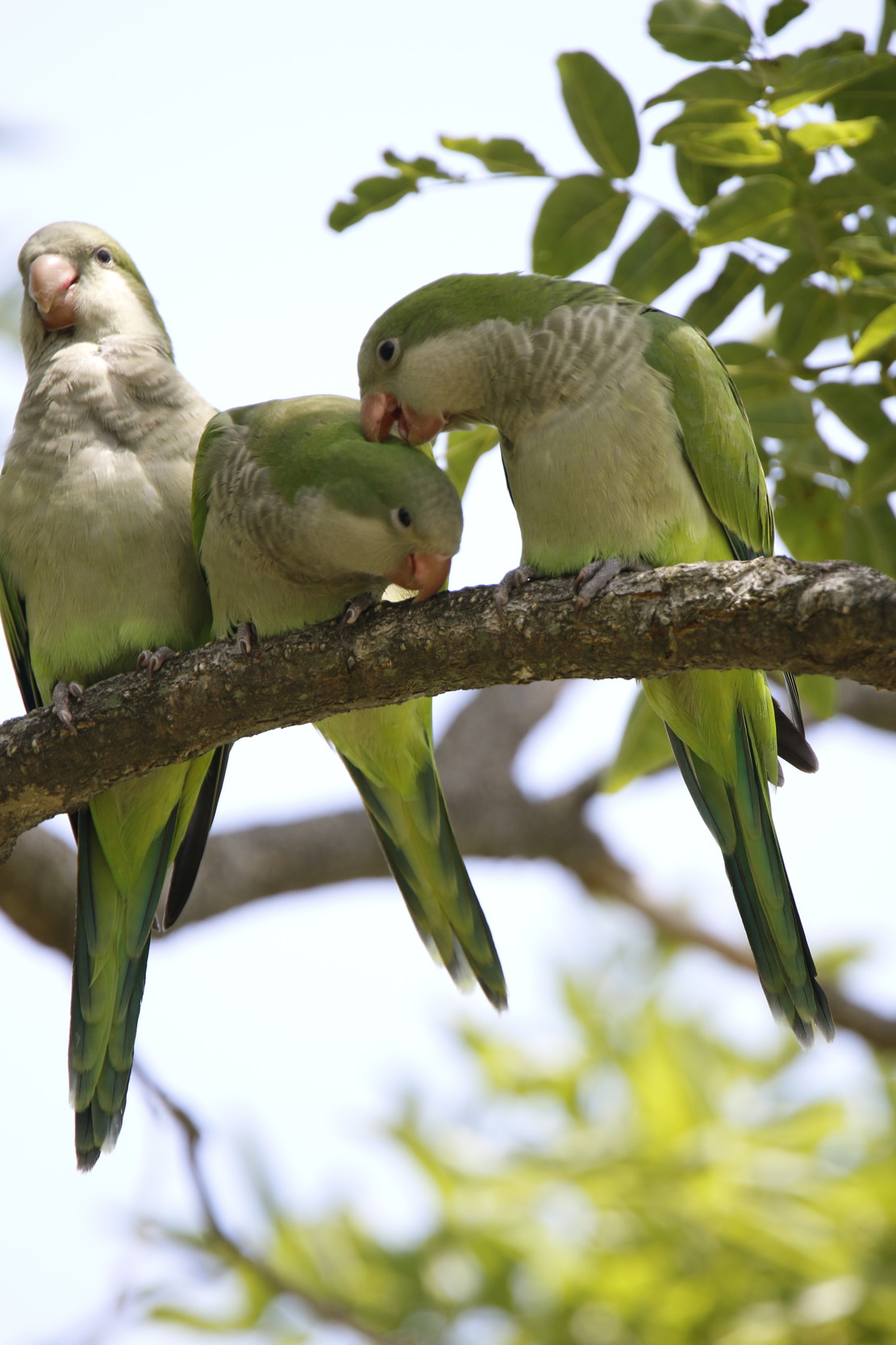Island Park residents ponder the disappearance of local green monk parakeets
For the past few years, Island Park has been home to a group of transplants of the feathered variety. They are loud and green and make a mess with their nests, but many residents like the green monk parakeets that have settled in the village. This year, however, some locals have raised concerns that the birds might be moving on.
It started this spring, when resident Christine Gawron, who enjoyed observing the birds from the second-story kitchen window of her home, noticed that there were fewer parrots visiting her birdfeeder. “I used to have maybe 15 on my feeder tray in the backyard,” she said, but now she is lucky if two or three show up.
This prompted her to check Shell Creek Park, where the parrots nest atop the park’s baseball field light poles. She noticed that some nests had been destroyed and were being rebuilt by the birds. She became concerned that people might have removed them. “I’m not the type of person that gets involved in something like this,” Gawron said. “I’m usually a very laid-back person, but I can’t let this go.”
Responding to a Herald inquiry, the Town of Hempstead, which manages the park, said it is not town policy to remove green monk parakeet nests, and even if it wanted to, it could not reach them. “We don’t take down the nests, we’ve never taken down the nests and in this case we don’t even have the equipment to take down the nests,” town spokesman Mike Deery said. “We don’t have a bucket truck that can reach that high.”
Gary Rogers of the Nassau County Society for the Prevention of Cruelty to Animals, said his organization had not received any complaints about the nests removal, but added that it was possible they were taken from the light poles due to safety concerns.
Green monk parakeets, also known as Quaker parrots, come from South America, but have adapted to the cooler climates here by building nests around elevated electrical equipment, such as lights and transformers, for warmth. Rogers said this could cause safety problems if the equipment overheats or is damaged. “Just like any other wildlife, they nest in places they’re not supposed to and create hazards,” he said, but added, “To remove them for no reason at all, that’s an issue.”
Rogers also floated the theory that the parrots may have temporarily ditched their nests naturally. “Sometimes birds will abandon their nests in order to force their babies to leave,” he said.
He also said it was possible that the nests had blown away. “We have had some good storms come through,” he said.
Resident Jareth Holub, who said he also enjoyed watching the birds as they fed on the fruit of the two Branford pear trees in front of his Island Park house, saw a sharp decline in the number of visiting birds. “I saw a few, but nothing like the large groups we’d seen in previous years,” he said. “I’m certain once their nests were destroyed, they changed their flight paths as well as their feeding habits.”
Other residents have noticed the decline as well. When Gawron raised her concerns that the nests may have been intentionally removed in the Island Park Community Group on Facebook, the post received 23 responses from residents, many of whom noted that they, too, saw fewer birds.
Whether the birds stay or go, they will be remembered for bringing an extra bit of flavor to Island Park. “They’re loud as heck, but it’s so cool,” Gawron said. “Who else has wild parrots in their yard?” She added that they were particularly appreciated in the winter, when they would remain active despite barren trees. “It adds a little bit of color,” she said.
Holub echoed the sentiment. “Even though they were not a native species that some would consider invasive, we still miss them!” he said. “They were raucous, loud, exotic and colorful. I hope they can establish a new nesting community and once again flourish.”
Erik Hawkins contributed to this story.

 44.0°,
Mostly Cloudy
44.0°,
Mostly Cloudy 